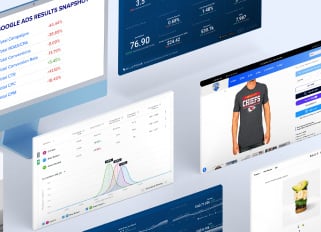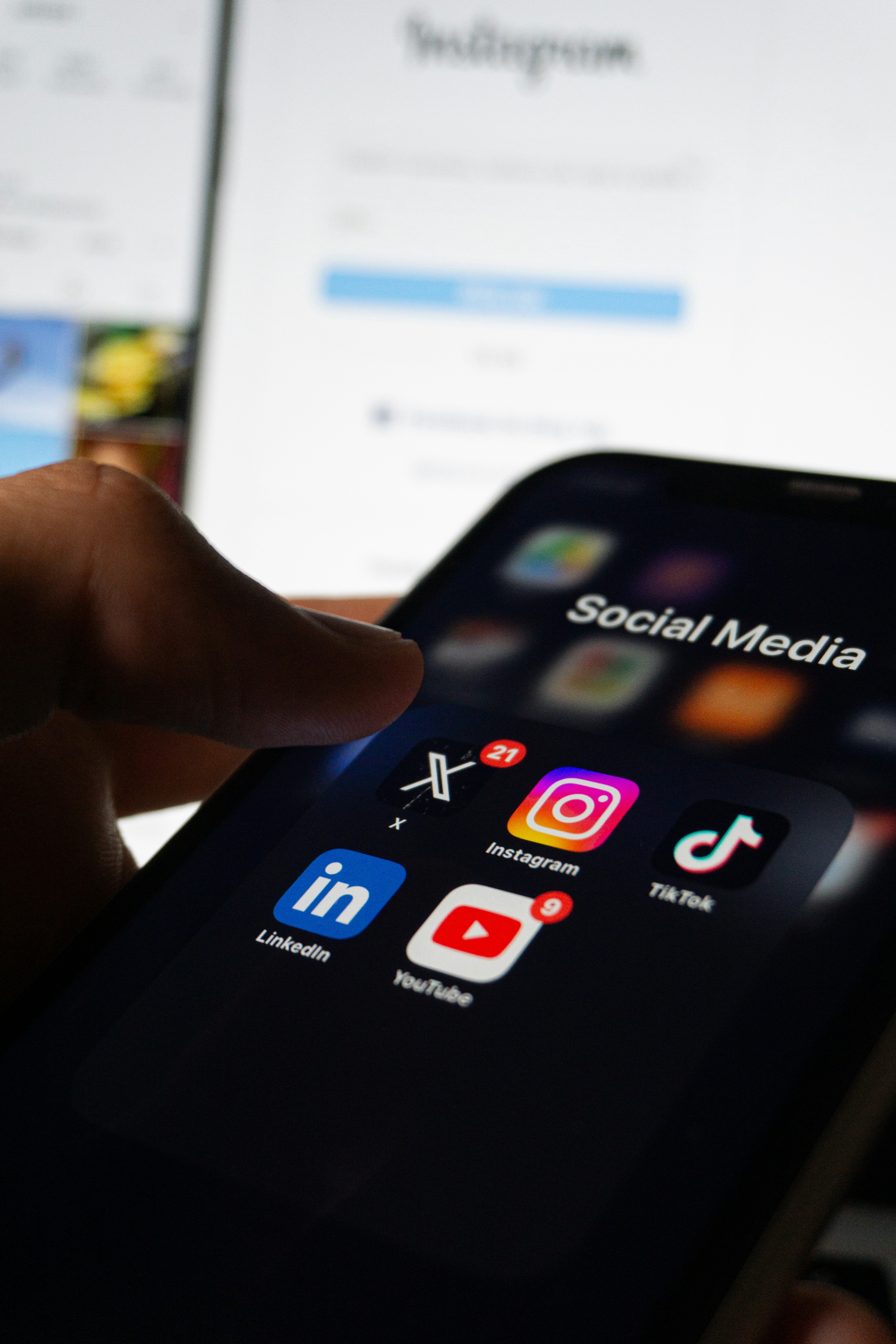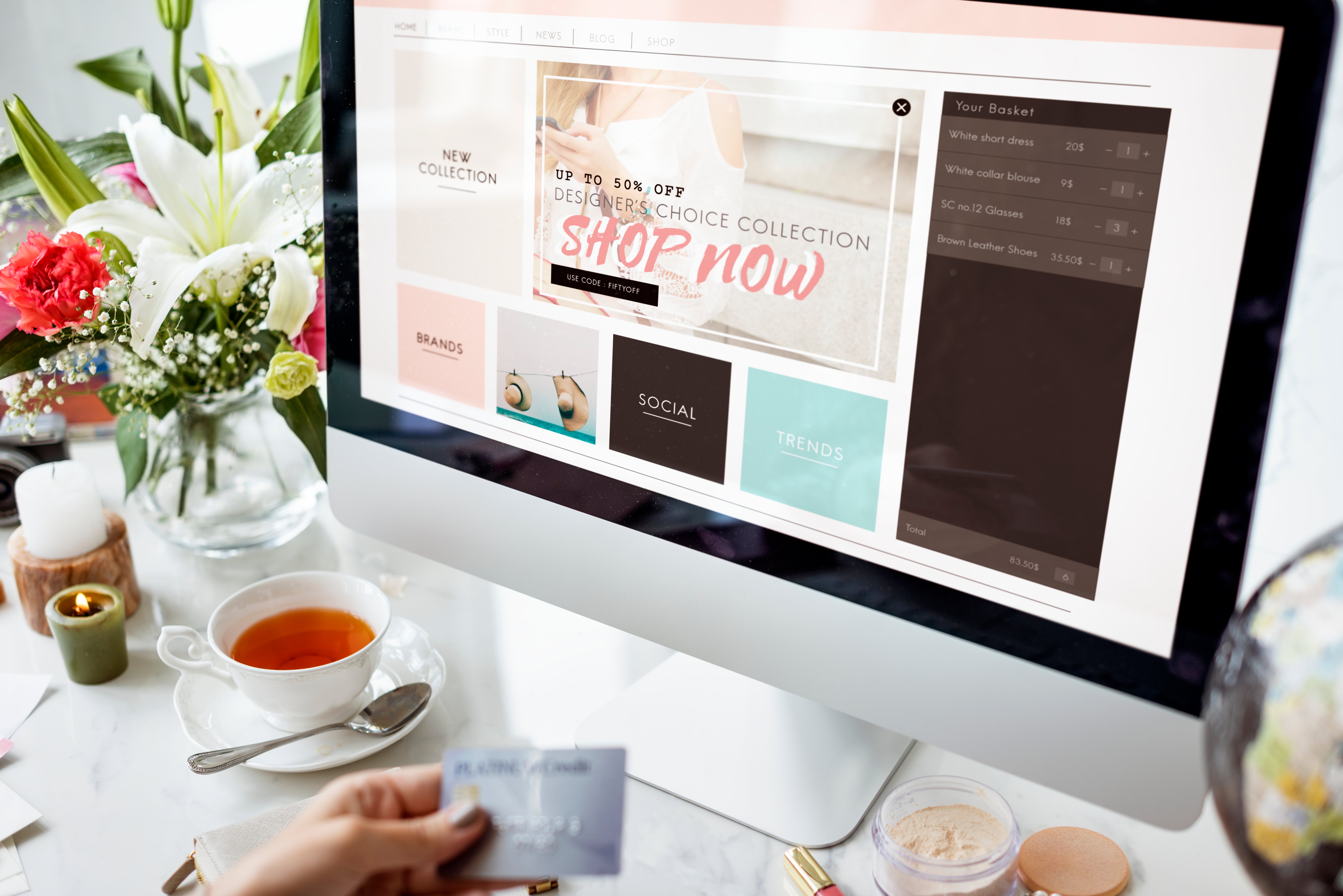.jpg)
Shopify CRO Best Practices: Identify and Fix Conversion Bottlenecks
In the fast-paced world of e-commerce, maximizing sales and enhancing customer experience are top priorities for Shopify store owners. This blog dives into the realm of Conversion Rate Optimization (CRO), offering insights that’ll identify and fix your Shopify conversion rate bottlenecks. Whether you're a digital marketer or an e-commerce entrepreneur, we'll explore strategies to boost your Shopify sales effectively.
Why Conversion Rate Optimization Matters
Ecommerce conversion rate optimization is a process of enhancing your online store and increasing the percentage of visitors who take desired actions, like making a purchase. In today's competitive e-commerce landscape, mastering CRO is vital for gaining and maintaining an advantage.
Effective CRO strategies can lower customer acquisition costs while boosting overall revenue. For Shopify store owners, investing in CRO goes beyond just increasing profits; it’s about fostering customer loyalty and crafting positive user experiences. High conversion rates often indicate satisfied customers, who are more likely to return and share their experiences, thereby expanding your brand's reach.
With consumers facing endless choices in the digital age, it’s crucial to optimize your Shopify store at every touchpoint to capture attention and secure sales. Simply put - CRO matters because not only does it drive sales, but it also builds trust and loyalty, which are key components of any e-commerce success story.
Understanding the Conversion Funnel and Key Metrics
Before we can boost conversions, it's crucial to understand the conversion funnel—the path potential customers travel from interest to purchase. The funnel comprises several stages, including awareness, consideration, and decision. Each step presents unique challenges and opportunities for conversion optimization.
Monitoring key metrics at each stage is vital. Metrics such as bounce rate, average session duration, cart abandonment rate, and checkout completion rate offer insights into where visitors are dropping off. For Shopify users, tools like Google Analytics and Shopify's built-in analytics provide a wealth of data to analyze customer behavior.
By understanding your conversion funnel, you can identify specific areas that need improvement. This targeted approach ensures your efforts are efficient and effective, paving the way for a seamless customer experience.
How to Calculate Your Ecommerce Conversion Rate
To determine your site's conversion rate, divide the total number of conversions by the total number of users who interacted with your website, webpage, or specific content during a defined timeframe. Next, multiply the result by 100 to express it as a percentage.
Conversion Rate = (Total Number of Conversions / Total Number of Visitors) x 100
For example, if your store achieved 50 sales and welcomed 1,000 visitors last month, your sales conversion rate would be calculated as follows: 50 divided by 1,000 equals 0.05, and when multiplied by 100, it results in a conversion rate of 5%.
To obtain a precise and meaningful ecommerce store conversion rate, it's crucial to be clear about the data you gather. Consider whether an online order counts as a conversion or if the sale must be shipped and completed. Additionally, decide if you’re measuring sessions or unique visitors.
What is the Average Conversion Rate?
Increasing conversions for an online store requires ongoing testing and refining. To conduct effective tests, establish benchmarks that define what constitutes successful performance.
As you delve deeper into conversion rate optimization, you can set personalized benchmarks and targets based on the historical performance of your content. However, it’s beneficial to start by understanding the average conversion rates for websites similar to yours.
For most ecommerce stores and sites, the average conversion rate typically falls between 2.5% and 3%. If you calculate your conversion rate and discover it exceeds 3%, you can consider yourself among the top-performing online Shopify stores.
Numerous CRO case studies demonstrate that even minor adjustments can significantly influence conversion rates.
Identifying Conversion Bottlenecks
Before implementing CRO strategies on your ecommerce websites, it's essential to identify where potential customers drop off in your sales funnel. These points of friction are known as conversion bottlenecks. Recognizing these issues allows you to target specific areas for improvement.
Start by examining your Shopify store's analytics data to pinpoint where visitors leave without completing a purchase. High exit rates on particular web pages or stages in the checkout process can indicate problem areas. Understanding user behavior through heatmaps and session recordings can also provide valuable insights.
Identifying bottlenecks involves analyzing both qualitative and quantitative data. While analytics highlight numerical trends, qualitative research, such as customer surveys, reveals the reasons behind those trends. This dual approach enables a comprehensive understanding of the barriers affecting your conversions.
Shopify Best Practices to Tackle Bottlenecks
Once you've identified conversion bottlenecks, it's time to take action. Implementing best practices can help alleviate these issues and increase conversions. Here are some tips for tackling common conversion barriers:
1. Define Your Brand Voice
A consistent brand voice is essential for businesses looking to build a strong and memorable identity in the marketplace. It acts as the thread that connects all forms of communication, enhancing brand recognition and trust. By maintaining consistency in your messaging, you can convey clear and cohesive messages to your audience, significantly influencing their perception of your brand.
Here are some tips for establishing and maintaining a consistent brand voice:
- Clearly define your brand's persona, values, and tone of voice.
- Train all customer-facing team members to communicate according to your brand guidelines.
- Use language that resonates with your target audience and aligns with your brand identity.
- Continuously monitor and refine your brand voice to ensure consistency across all touchpoints.
Moreover, understanding user behavior is critical when defining your brand voice. It enables you to tailor your messaging effectively, ensuring every interaction feels personalized and engaging.
Additionally, strategically employing target keywords within your brand voice enhances your Search Engine Optimization (SEO) efforts and ensures that your messaging aligns with what potential customers are searching for.
2. Optimize Product Pages for Conversions
Optimizing product pages is essential to maximize conversions on your Shopify store. Here are some strategic tips to ensure your product pages convert visitors into buyers effectively:
- Use High-Quality Product Images: Visual appeal is paramount in the online shopping experience. Utilize high-resolution, optimized images that allow potential buyers to view your products from multiple angles. Include zoom-in features, and consider adding videos or 360-degree views for a more comprehensive visual understanding.
- Provide Detailed Product Descriptions: Clarity and detail in product descriptions directly influence purchasing decisions. Ensure that your descriptions highlight key features, dimensions, and benefits. Use clear, persuasive language that aligns with your brand's voice to create descriptions that resonate with your target audience.
- Incorporate User-Generated Content: Leverage customer testimonials, reviews, and user-submitted photos to build trust and authenticity. Displaying real-life experiences and feedback can encourage potential buyers to feel more confident in their purchasing decisions.
- Utilize Effective Call-to-Actions (CTAs): Ensure that your CTAs are visually striking and clearly communicate the next step you want the customer to take, such as "Add to Cart" or "Buy Now." Position these CTAs strategically to make the purchasing process seamless.
- Enhance Page Load Speed: Slow loading times can lead to high bounce rates. Improve page speed by optimizing images, leveraging browser caching, and minimizing scripts. Faster page loads contribute to a smoother, more enjoyable user experience.

3. Enhance Landing Pages for Maximum Engagement
Landing pages are often the first interaction potential customers have with your brand. Ensuring they are engaging and informative is critical for capturing interest and driving conversions. Here are some best practices for optimizing your landing pages:
- Clear Messaging: Your landing pages should convey your offer without overwhelming visitors. A concise headline paired with a compelling subheading can quickly communicate value and encourage further exploration.
- Responsive Design: With a significant number of shoppers using mobile devices, ensure your landing pages are mobile-friendly. A responsive design guarantees a seamless experience regardless of the device.
- Call-to-Action (CTA): Every landing page should have a strong, clear call-to-action that guides visitors toward their next step—whether that's exploring products, signing up for a newsletter, or making a purchase.

4. Simplify the Checkout Process
A complex or lengthy checkout process can lead to cart abandonment, even for the most determined customers. Simplifying this stage is crucial for reducing drop-offs and boosting conversion rates. Here are some effective strategies:
- Minimize Steps: Streamline the checkout page by reducing the number of steps needed to complete a purchase. Consider using a single-page checkout to keep customers focused and engaged.
- Guest Checkout Option: Offering guest checkout can help prevent unnecessary friction, especially for first-time buyers who may be hesitant to create an account.
- Multiple Payment Options: Providing various payment methods gives customers flexibility and can enhance their shopping experience, further reducing cart abandonment.
- Free Shipping: Highlighting free shipping offers can motivate customers to complete their purchases, making the checkout process more appealing.
- Auto-Fill Forms: Implementing auto-fill options for address and payment details can speed up the checkout process, leading to higher conversion rates and improved user satisfaction.
5. Implement Trust Signals
Building trust is paramount for converting visitors into paying customers. Trust signals reassure potential buyers that your store is reputable and their information is secure.
- Customer Reviews: Display authentic reviews and testimonials prominently on product pages. Positive feedback from existing customers can significantly influence purchasing decisions.
- Secure Payment Icons: Include recognizable security icons and certifications during checkout. These visuals assure the customers that transactions are safe and protected.
- Transparent Policies: Clearly communicate your return and refund policies. Transparency builds confidence and reduces hesitation among potential buyers.
6. Personalize User Experience
Personalization enhances the shopping experience by catering to individual preferences and behaviors. By tailoring content and recommendations, you can boost engagement and conversions.
- Dynamic Product Recommendations: Use AI-powered tools to suggest products based on customers' browsing history and purchase behavior. Personalized recommendations increase the likelihood of additional purchases.
- Customized Emails: Segment your email list to deliver targeted content that resonates with specific customer groups. Personalized emails foster a sense of connection and encourage repeat visits.
- Location-Based Offers: Consider offering location-specific promotions or discounts to create a localized shopping experience that feels relevant and exclusive.
7. Leverage Data and Analytics
Continuous improvement relies on data-driven decision-making. By analyzing performance metrics, you can refine your CRO strategies and achieve better results.
- A/B Testing: Regularly conduct A/B tests to compare different versions of pages or elements. This experimentation helps identify which changes lead to improved conversion rates.
- Conversion Funnel Analysis: Examine each stage of your conversion funnel to pinpoint areas where customers drop off. Use this information to make informed adjustments that enhance overall performance.
- Customer Feedback: Gather feedback through surveys and reviews to gain insights into customer satisfaction and preferences. This qualitative data complements quantitative analytics, offering a holistic view.

Shopify Optimization Tools for Enhancing CRO
Optimizing conversion rates on a Shopify store requires a strategic approach, paired with the right tools that provide insights, automate processes, or create engaging customer experiences. Here are some recommended tools that can help enhance Conversion Rate Optimization (CRO) for your Shopify store:
- Hotjar: This tool provides heatmaps and session recordings, helping you understand how visitors interact with your site. By visualizing where users click, scroll, and spend time, Hotjar allows you to optimize design elements that enhance engagement and conversions.
- Google Analytics: Google Analytics offers a wealth of data and insights to help you understand your store's performance. By tracking traffic, behavior, and conversions, you can identify areas for improvement and measure the impact of changes on conversion rates.
- Klaviyo: Known for its email marketing capabilities, Klaviyo also offers personalization and segmentation features that can boost CRO. By sending targeted campaigns based on customer behavior and preferences, you can improve engagement and conversion rates.
- Privy: This tool converts visitors with pop-ups, banners, and other engaging overlays. Privy is highly customizable, allowing you to create time-sensitive offers or exit-intent popups that capture lead information and incentivize purchases.
- Lucky Orange: Similar to Hotjar, Lucky Orange provides heatmaps and session recordings but also includes chat functionality and conversion funnels. Real-time visitor insights help identify barriers to conversion and inspire data-driven enhancements.
- Optimizely: Known for extensive experimentation capabilities, Optimizely is ideal for A/B testing on Shopify. Its user-friendly interface and in-depth analytics help refine design choices and marketing strategies to maximize conversion potential.
- Mailchimp: Beyond its email marketing prowess, Mailchimp provides automation tools that enable personalized follow-ups and abandoned cart reminders, leveraging data insights to enhance customer retention and conversion rates.
By integrating these tools into your ecommerce platform or Shopify store’s workflow, you can gain valuable insights, execute impactful experiments, and create personalized experiences that collectively drive higher conversion rates.
Future Trends in E-commerce CRO
The e-commerce landscape is constantly evolving, and staying ahead requires adapting to emerging trends and technologies. Here are some future trends to watch:
- Voice Commerce: With the rise of voice assistants, optimizing for voice search and enabling voice-activated shopping experiences will become increasingly important.
- Augmented Reality (AR): AR technology allows customers to visualize products in their real environment before purchasing, enhancing the shopping experience and reducing returns.
- AI-Driven Personalization: AI will continue to play a significant role in delivering hyper-personalized experiences, from product recommendations to tailored marketing messages.
All in All
Mastering CRO is an ongoing endeavor that requires dedication and adaptability. By applying best practices, leveraging data, and staying informed about industry trends, your Shopify store can flourish. Remember, CRO is not a one-time effort; it's a continuous journey toward sustainable growth and success in the e-commerce world.
If you want to boost your Shopify optimization, reach out to experts like BlueTuskr, an ecommerce marketing agency. We provide personalized guidance to enhance your conversion rates and improve your rankings in search engines. Together, we can unlock your Shopify store's full potential and achieve meaningful results through effective CRO strategies.
Connect With Us
Recent Post

.png)





Tell us what you think!